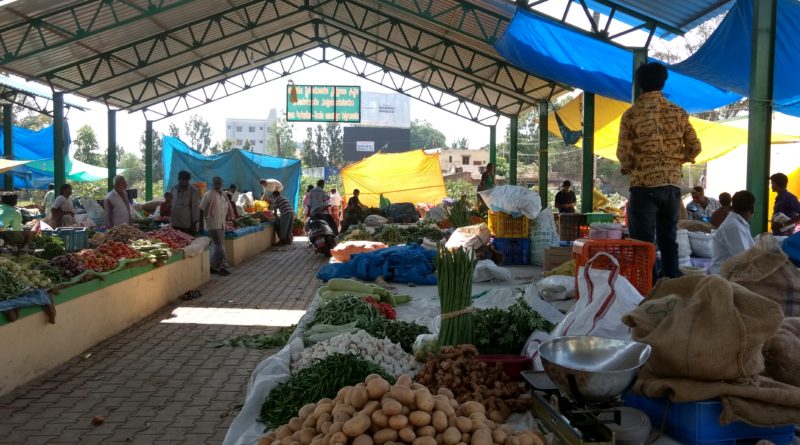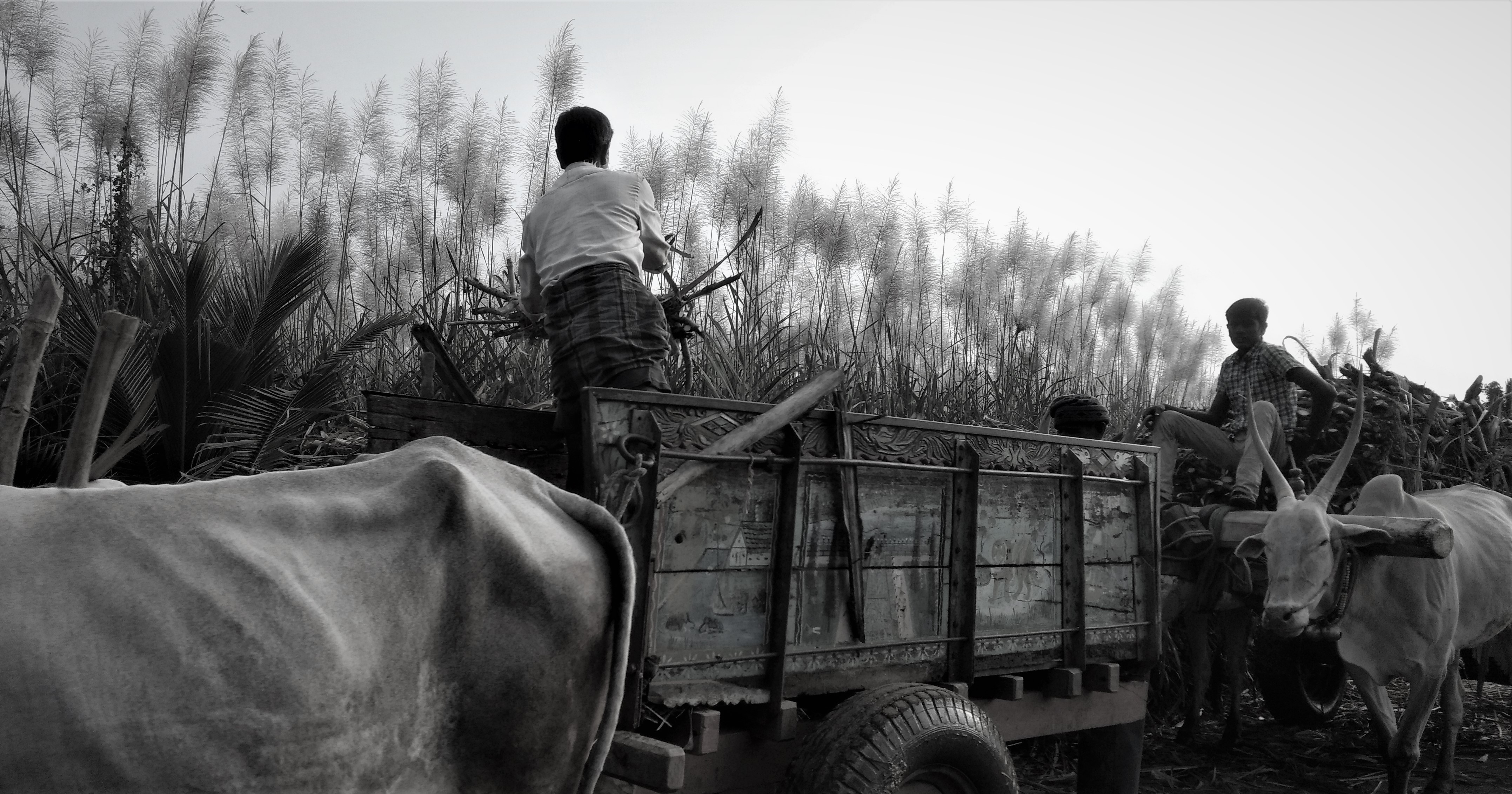Cold Storage and Indian Agriculture: The Cold Future of a Sleeping Giant
|
Mannira.in Channel സബ്സ്ക്രൈബ് ചെയ്യൂ.
|
In the mid-January 2018, the road to Bhimakpura village of Uttar Pradesh (UP) was reeking with a rotten smell of potatoes. Earlier in July 2017, the road leading to Jajpur, Odisha was blocked because lumps of tomatoes, pulses, milk and peanuts found decaying on the sides. In series of similar incidents happened after 2000, like the tomato farmers in Kinathukadavu, Tamil Nadu dumped their produce to protest against plummeted prices and farmers of Chitradurga, Karnataka left their produce to perish, the farmers either threw away their produce as a protest or compelled to destroy them because of the steep falls in the market price of fruits and vegetables and the high cost incurred to handle perishable goods.
The distress of the farmers is a collective outcome of parameters like price falls, crop loss, debt crisis, skewed market intervention methods and unreasonable costs incurred by farmers for facilities like cold storage and transportation at a time of bumper harvest and low demand. Transporting the produce to the faraway markets incurring huge costs becomes a nightmare for the desperate farmers all over the country. Tomato farmers are the worst affected by this market fluctuation and infrastructure incompetency. The unreasonably high costs of cold storage services and lack of proper functionality add their share to the looming debt crisis of the farmers.
Unlike Potatoes and Onions, Tomatoes have a relatively short lifespan and the most of the produce goes rotten if it is not kept under proper cold storage facilities. Factors like crop damage and bumper production in various parts of the country make an efficient national cold storage network a must. In simple terms, the nuances of cold storage can be summed up as an effective and efficient network of logistics which controls the temperature, humidity, air composition, and packaging of the goods. The cold storage chains function as the primary links between the production hubs and the consumer hot spots.
The history of the cold storage sector began in 1938 when the transportation of perishable goods in the United States went through a radical change. Frederick McKinley Jones, a self-taught inventor of a lot of ingenious products, introduced a portable air cooling unit for trucks in America. Later, the man and his pioneer cold storage venture, Thermo King Corporation, went on to become a part of the history of the cold-chain sector of America. Moreover, Jone’s path-breaking methods played a crucial role during World War II in preserving blood, medicine, and food to the war fronts, saving a number of valuable lives.
By the end of World War II, the industrialists realized an efficient cold-chain network is inevitable for the growth of industries producing agricultural products, seafood, frozen food, photographic film, chemicals, and pharmaceutical drugs. Nowadays, in large agricultural producers like the US, well established, professional networks of organised cold-chain solutions are considered as the key to reaching out the perishable products scattered throughout the length and breadth of the country.
Also Read: How Kudumbashree Redeemed the Fallen Agrarian Angels as Agripreneurs
With the borders are opening up and nations are busy signing up open trade pacts, transporting sensitive products across long distances within a short time becomes the trump card in championing the international trade. Two of the major trump cards in the cold-chain technology are preserving the quality of products and increase their salable lifespan. According to a recent study by Crisil, the Indian cold storage sector is expected to grow by 13% to 15% in the next five years. The Crisil study also suggests that the sector has a whopping market share of Rs 24,800 crore in fiscal 2017, with a projected share of Rs 47,200 crore in fiscal 2022.
The projected figures hint at a healthy sector with competitive parameters. But, the most of these figures are accumulated in the three key segments of meat, seafood and bio-pharmaceuticals. Even though there is increased demand from the agricultural sector, whose major share comes from the fruits and vegetables, lack of a full-fledged cold-chain network in the national level shackles the immense growth potential of the sector and makes it a sleeping giant. Yet, the figures given out by the Agricultural and Processed Food Products Export Development Authority (APEDA) show auspicious trends like an increase in the share of fruits and vegetables in exports to 22% in the last financial year from a 14% in 2016 – 17.
But, under the distant thunder of projected growth figures floats the dark clouds of increasing rate of wastage of fruits and vegetables. According to the latest figures of Central Institute of Post-Harvest Engineering and Technology, around 15% to 16% fruits and vegetables are wasted because cold storage facilities are located far away from the farm gates. Obviously, organized firms with sound technical and capital support survive in this export-oriented sector because of strict quality control requirements and regulations.
Also Read: Organic Farming: Breaking the Puritan Myth and Searching for the Truth
This calls forth the long pending demand of fruit and vegetable farmers for establishing an efficient cold storage grid across India. Experts suggest that a cold storage facility should locate at least within 50 to 150 km of the farm gates, which is a goal seems very far away. The southern and western farmlands of India suffer a great deal from this infrastructure handicap because of the tropical and humid climate. Such hostile circumstances demand a prioritised investment policy with a public and private partnership to establish an affordable, reliable and sustainable cold-chain infrastructure.
Maximum utilisation of renewable energy sources along with innovative technologies should also be incorporated with the master plan. Lack of an adequate number of temperature controlled vehicles and first and last mile connectivity are the main issues faced by the farmers and producers. Instead of the conventionally “cold” measures, optimize the transportation from farm gate to point of sale, with a minimum cost is the need of the hour. A recent statistics show that among around 3,500 players operating in this sector, a mere 8 to 10% are organised firms capable of professional service.
Considering the highly fragmented and unorganised nature of the cold-chain industry, an upgrade of the outdated cold storage units and enhance storage capacity are some of the immediate actions to cut post-harvest losses and ensure a better return to farmers. According to one estimate, the post-harvest losses in the country amount to 20% of total annual fruit and vegetable production, which costs more than Rs 12,000 crore. Only a futuristic cold storage policy that covers harvesting, routing, packaging, cooling, staging, transport, storage, distribution, and retail can address the multi-faceted problems of the farmers.
Also Read: A Walk on the Sickle’s Edge: When Looking for Farmers in the Union Budget 2018
Even though estimates suggest that India’s total capacity of the cold storage units amounts to 34 million tonnes, with an 11% share in the world’s total vegetable production, the country holds a mere share of 1.7% in global vegetable trade. Like in the fisheries, dairy and pharmaceutical sectors, vegetable and fruit sector needs cold-chain solutions as catalysts for accelerating the growth. The Finance Minister, Arun Jaitley announced the Rs 500 crore Operation Green, a program to boost the production of tomatoes, onions and potatoes, in his budget speech. As the budget is wallowing in the populist provisions and plans, there is nothing hopeful regarding the cold storage network in the country. Ironically, the Ministry of Finance has listed cold-chain network under Infrastructure category and strengthening the colt storage network is crucial for the success of Operation Green, a fact the Finance Minister forget to address.
The United Nations Food and Agriculture Organisation (FAO) estimates suggest that one-third of food produced for human use is lost or wasted each year. The World Cold Chain Summit to be convened in Ho Chi Minh City, Vietnam, on March 2018, puts forward wasting less food as the agenda. The summit will also focus on the socio-economic aspect of a proper cold-chain framework which can address one of the drastic issues of the human race, hunger. In other words, an integrated cold-chain infrastructure not only increases the saleable life of a perishable product but also increases the survival rate of a human being in need of healthy food.
References:
- http://www.thehindubusinessline.com/economy/agri-business/India-needs-to-expand-cold-storage-facilities/article20923044.ece
- https://www.syncoreindia.com/single-post/2016/04/01/Challenges-and-Scope-in-Indian-Cold-Chain-Industry
- http://www.fnbnews.com/Technology/issues-faced-by-cold-storage-industry-in-india-in-focus-at-meet-in-agra-39281
- http://www.fnbnews.com/Top-News/cold-chain-industry-in-india–present-status-and-future-prospects-38621
- http://www.thehindubusinessline.com/economy/cold-chain-pie-to-nearly-double-in-5-years-crisil/article22692968.ece
- https://www.prnewswire.com/news-releases/indian-cold-chain-industry-outlook-2022-300386897.html
Also Read: How GST Can Reinvent Hope for the Crops and Change the Plight of the Indian Farmer
Picture: File
|
Mannira.in Channel സബ്സ്ക്രൈബ് ചെയ്യൂ.
|



